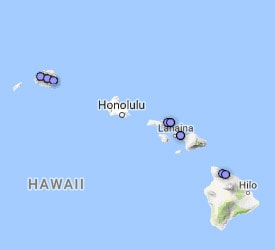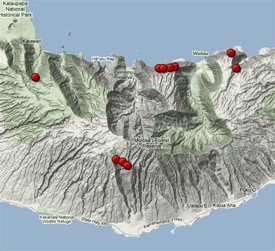World 🢖 Australia and Oceania 🢖 Polynesia 🢖 United States 🢖 Hawaii 🢖 Moloka’i
Waterfalls 🢔 Geological wonders 🢔 Categories of wonders
Wonder
Papalaua Falls
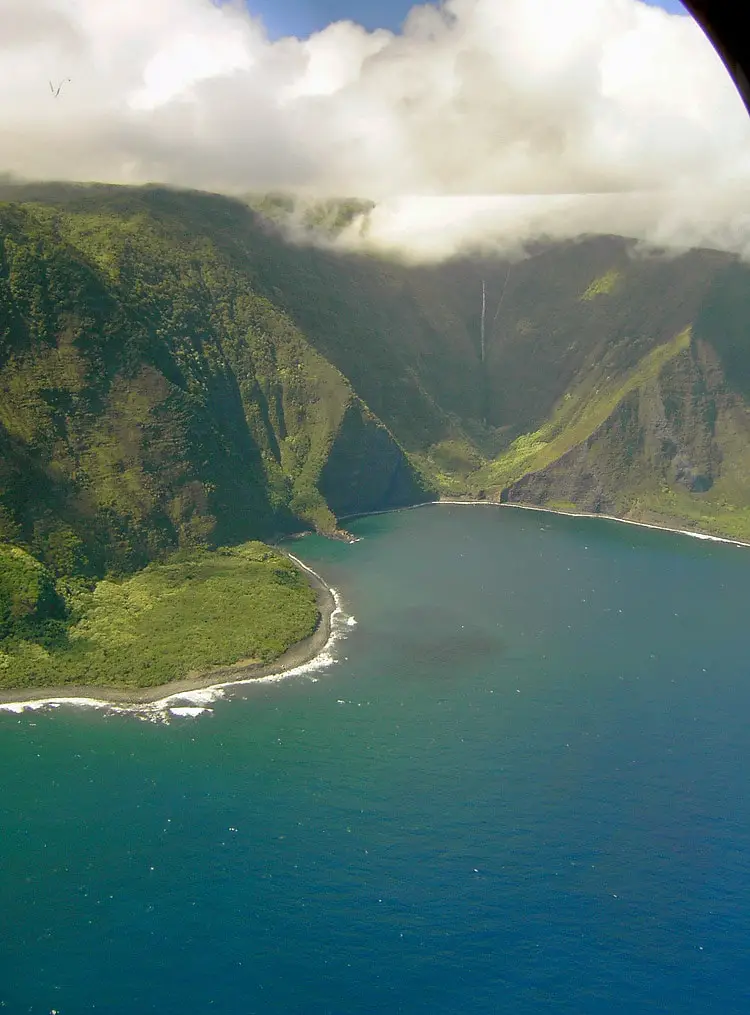
 In short
In short
Northern part of Moloka’i island is characterized with extremely tall cliffs, deep valleys and lush green vegetation. Extremely tall waterfalls add extra beauty to this idyllic fairy-tale landscape. Papalaua Falls is one of such beautiful falls located at the beginning of deep valley.
 41.8%
41.8%
GPS coordinates
Location, address
Alternate names
Height
Map of the site
If you see this after your page is loaded completely, leafletJS files are missing.
 In detail
In detail
Formation
Volcanoe, rain, and ocean in the north-eastern part of Moloka’i have created one of the most spectacular landscapes in the world.
Volcanic activity over the last 1.5 million years has created mountains here. The summit of East Moloka’i volcano (1,514 m high) gets a lot more rain than the western part of Moloka’i island – approximately 4,000 mm per year – thus the rainwater has cut spectacular valleys in the volcanic shield and formed very tall, nearly vertical ridges. Rain maintains lush vegetation – even very steep slopes here are covered with an emerald green cover of plants. Waves of the Pacific ocean have washed out the volcanic shield, creating spectacular cliffs.
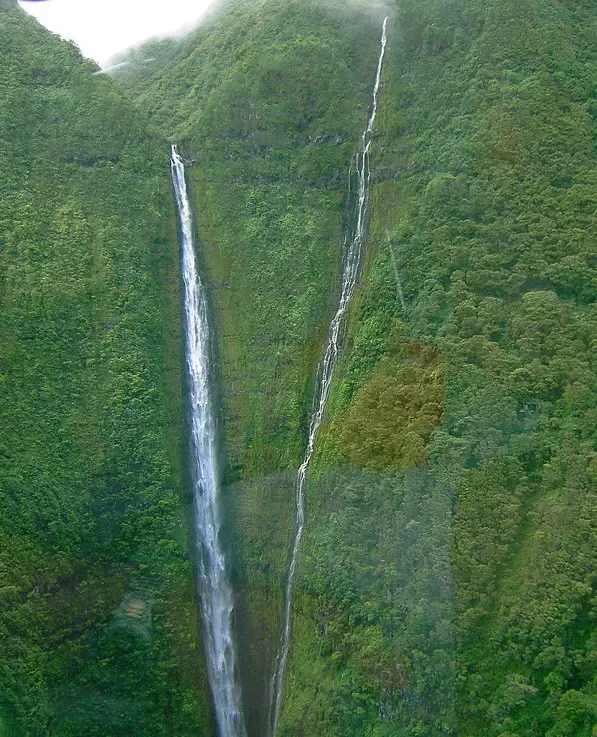
Valley
Papalaua Falls are located at the beginning of one such valley – called Papalaua Valley, also Hāka’a’ano. It is some 1.2 km long, up to 1.4 km long – and sides of the valley are more than 800 m tall. Sun in this deep valley shines only for part of the day. Valley is isolated – one can leave it by water or by hard climbing. In earlier times here lived Hawaiians and at late period – Chinese, there still are seen remnants of terraces for growing taro. Nowadays valley is not inhabited.
Stream
Papalaua Falls have formed on Kawai Nui Stream. Contrary to most waterfalls of Moloka’i, Papalaua Falls are perennial, e.g. flowing also in the dry period of the year. The estimated average volume is 1 m³ per second. In the rainy season (November – March) falls can become very powerful.
In Papalaua Falls meet two streams. For the most part, these streams are separated and they join only at the lower part of falls. The smaller stream is located to the north, it is higher.
Falls
Papalaua Falls are approximately 501 meters tall and consist of 5 drops. Especially impressive is the middle part – 340 m tall drop. The water here, for the most part, does not have a free fall, it flows along a very steep fissure made by the force of the stream. Each of the drops ends with a pool.
This middle part of falls can be well observed from the sea. Lower part though disappears from the sight – it is hidden in a very deep and steep chasm.
Experienced trekkers can reach the pool of the lower, 24 m high drop.
Legend
There is a Hawaiian legend about the lower pools and the origin of the valley:
The main goddess of Hawaiians – Hi’iaka – fought the evil water spirit of this stream – a giant man-eating lizard (mo’o). Lizard in agony carved the valley with its tail.
Hawaiians have a belief that water spirit – mo’o – in a form of a lizard still lives in the deep lower pool of Papalaua Falls. He might attack innocents who swim here. Similar legends exist about other waterfall pools in Moloka’i, like Moa’ula Falls.
Wrong images
Very often under the name of Kahiwa Falls there are published images of Papalaua Falls. See yourselves – search of "Kahiwa" in Flickr will bring you four images of Papalaua Falls! Only one of these images by luck contains also Kahiwa Falls seen to the right from the pole.
If you see under a name of Kahiwa Falls an image of a very high waterfall at the far end of the green valley – these for sure are not Kahiwa Falls but rather the Papalaua Falls which are only 1 – 1.2 km away. Kahiwa Falls fall nearly directly into the ocean!
References
- Papalaua Falls. World Waterfall Database. Accessed on June 6, 2010
- Papalaua Falls by John "Caveman" Gray (with images). World of Waterfalls. Accessed on June 6, 2010
Papalaua Falls are included in the following articles:
 Linked articles
Linked articles
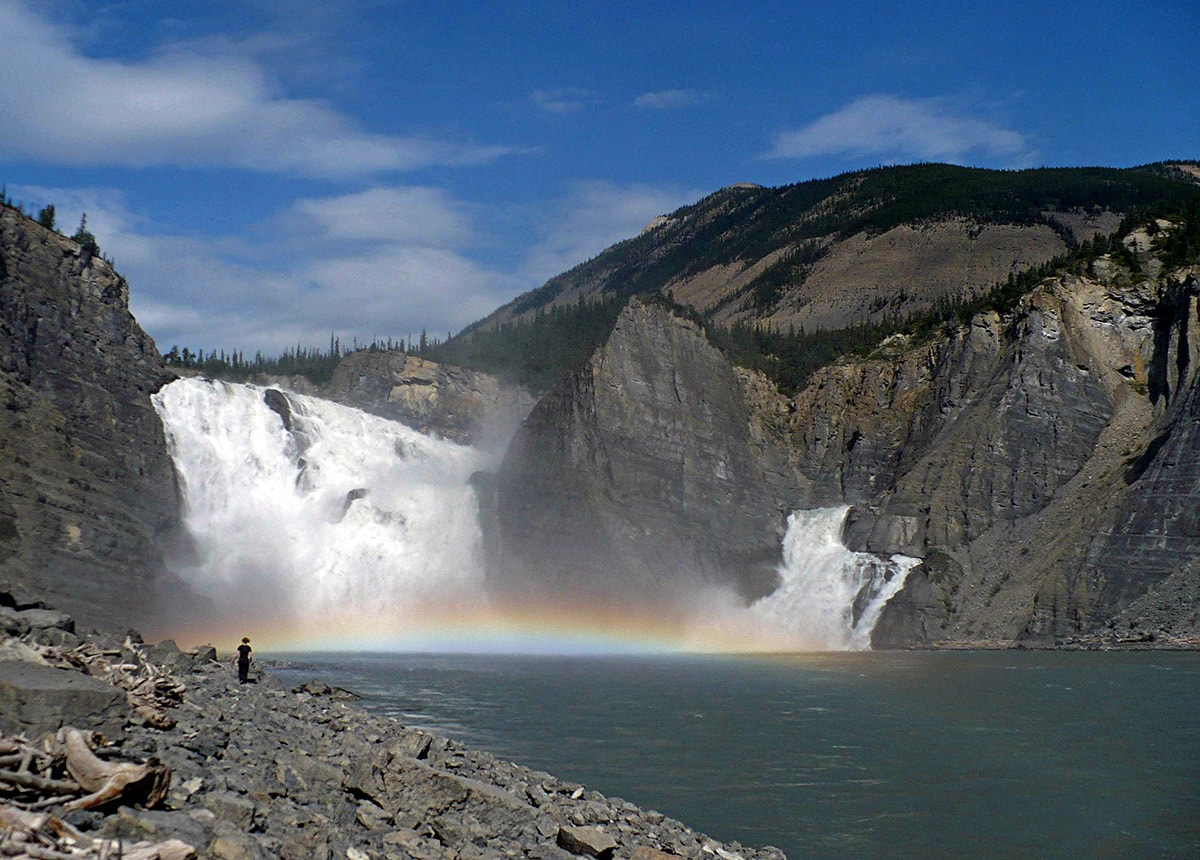
Waterfalls
Some of the most fascinating and awe-inspiring natural monuments are waterfalls or locations where a river abruptly changes its elevation.
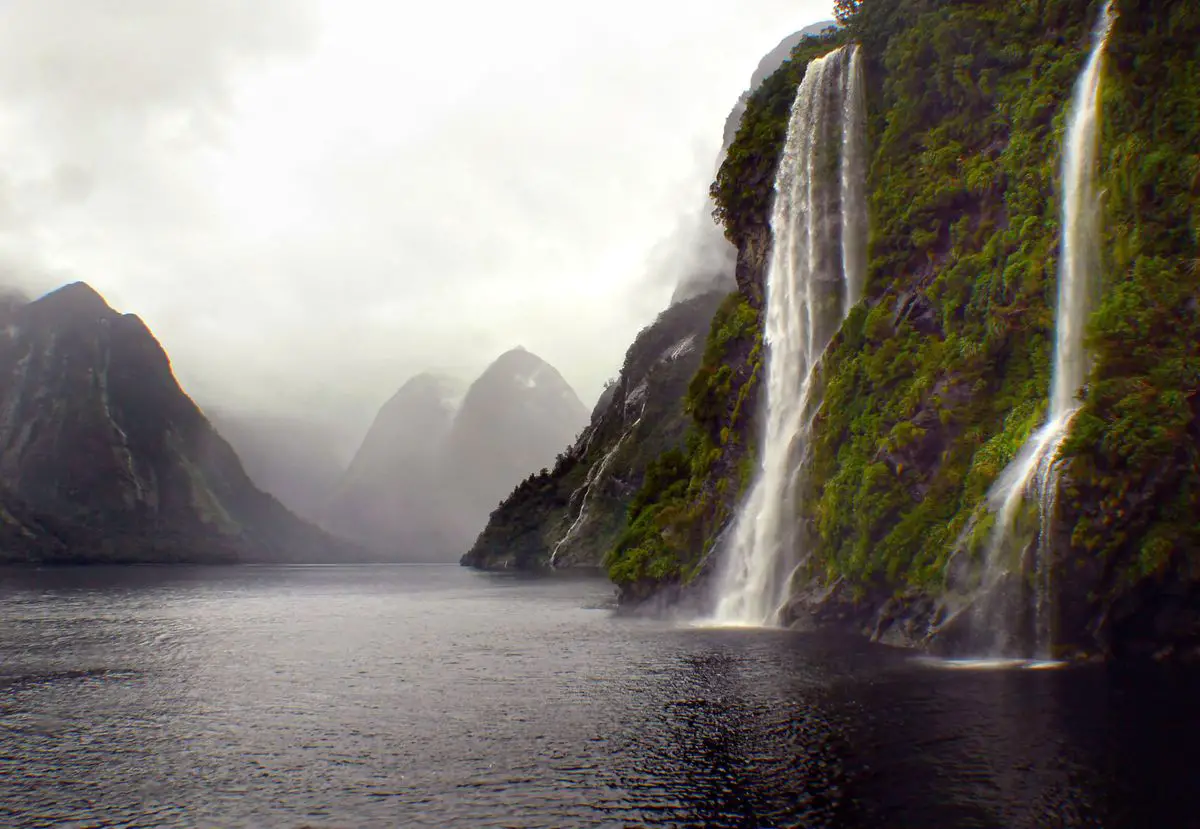
Wonders of Polynesia
Although the landmass of Polynesia is small, the charm and special beauty of this region are some of the most impressive on our planet. These islands are endowed with lush and beautiful nature, with warm oceans and friendly people representing a distinct culture. Polynesia is very rich in both natural and cultural landmarks and many of them are unique.
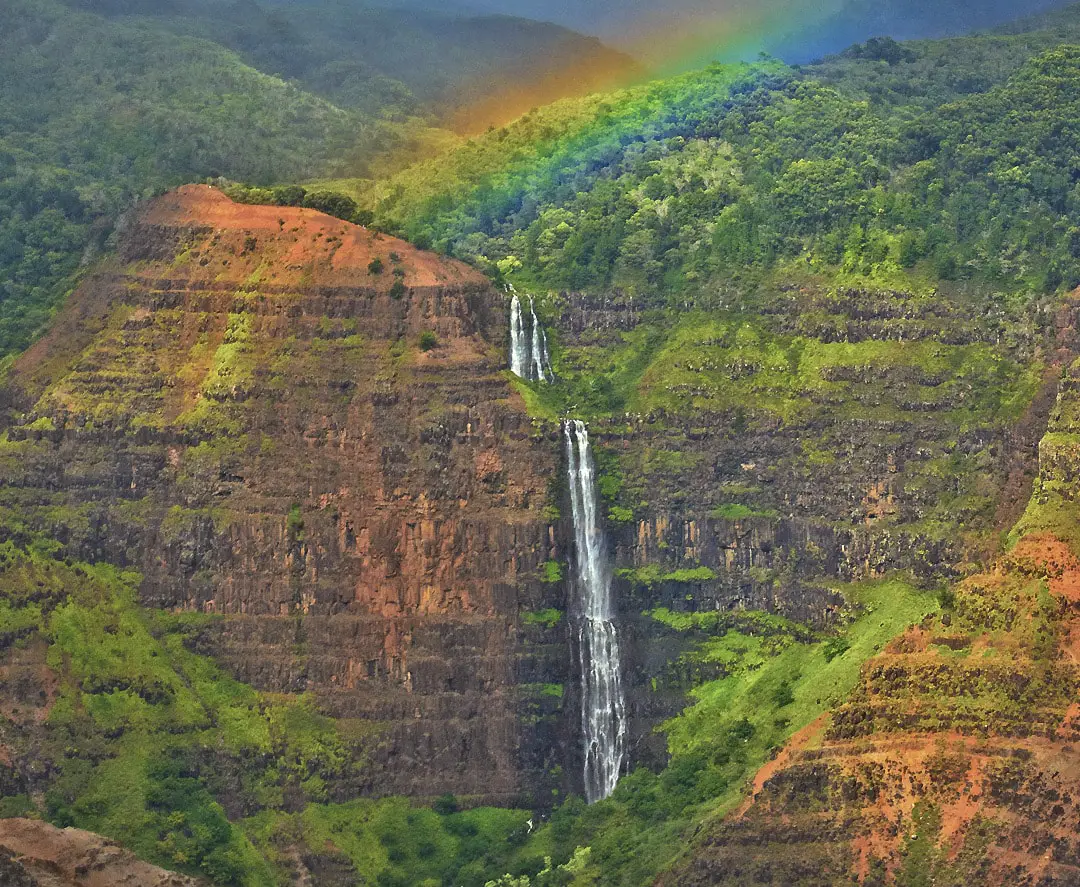
Wonders of Hawaii
The Hawaiian Islands belong to the most remote islands in the world. Hawaii is characterized by a tropical climate, mountainous relief, volcanism, and isolation. If compared to most islands in the Pacific, several Hawaiian Islands have comparatively large landmasses. All these factors have led to the development of numerous impressive and unique natural attractions and some impressive monuments of culture.
 Recommended books
Recommended books
Ancient Sites of Maui, Molokai and Lanai
This informative and easy-to-follow guidebook makes the ancient sites of Maui, Molokai, and Lanai available to the general public for the first time. Grouping the sites by location, the book characterizes the cultural background of five main types of sites: heiau (temples), pohaku (sacred stones), petroglyphs, caves, and fishponds.

